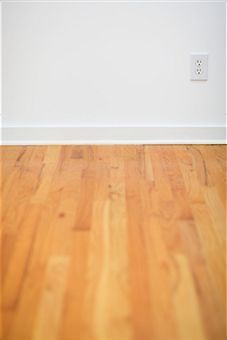
Have you ever wondered what is the soft flooring used in old museums, churches, or libraries? This soft, comforting wood is cork vinyl flooring that has been in use for a really long time. Let us understand what it is and its advantages for home décor.
What is it?
Cork is derived from the outer bark of the oak tree, Quercus suber. These cork trees are harvested from the 7 cork producing countries, Portugal (30%), Algeria (21%), Spain (20%), Morocco (16%), France (5%), Italy (4%) and Tunisia (4%). A cork tree needs to be about 20 to 25 years old, only then can it be used to harvest the cork bark. This harvested cork bark is called 'Virgin'. If you look at this bark, it will be hard and have a very irregular structure. When a layer of cork bark is harvested, gradually a new bark layer will begin to grow on the tree. Thus, a tree can be harvested after every 9 to 10 years. This gives the tree a chance to grow back the bark. One tree can produce several hundred kilograms of cork. If harvested carefully, the tree can survive for many years.
What makes cork flooring so popular is that it is environmental friendly. All one needs to do is clean the slabs of the bark and boil them. Their rough outer surface is stripped and one can punch out the bottle stopper 'corks' from the best material in the slab. The remaining material is ground into small granules. This is mixed and baked into large blocks. This means there is 0% waste and all matter is used up. The tree, if harvested unharmed, will continue to grow and produce more cork. Thus, having no effects on the environment. The cork flooring derived from the harvested bark is very flexible, water-resistant and airtight. It can be joined together and used as a durable floor covering.
Natural flooring is different from vinyl flooring. Polyvinyl Chloride (PVC) is used as a backing for cork inner layer and applied as a surface layer. There are a few health as well as environmental issues related to PVC. Thus, people generally prefer natural cork flooring over vinyl cork flooring.
Cork Flooring Tile
The cork flooring tile has a very stylish look and is easy to maintain. These tiles are water-resistant and can handle rough foot traffic. These cork flooring tiles give out a very warm and relaxing ambiance to the room. These titles are antimicrobial in nature and are non-toxic. These tiles are mildew resistant and do not emit VOC emissions. This makes them good to be used in bathrooms and kitchen areas. They do not absorb the water, but they can stand water for long periods of time. They are ideal to be placed near a bath or shower. This is because they give a very comfortable and warm feel to wet legs.
Uses
There are plenty of uses around the house. You can use it as an underlay for walls, ceilings and floors. You can use it as a baseboard and molding. Home decorators use cork vinyl tiles for living rooms, kitchens, bathrooms and hallways. It is available in rolls when used as an underlayment. These titles are available in sizes like 2" x 24" and 12" x 12" x 3/16".
You need to approach professional to help with the cork flooring installation. Many professionals use water based adhesives to install these flooring. These tiles are given a protective coating with natural wax. Maintaining these flooring is also very easy as you only need to use a dry or damp mop to clean tiles with wax finish. If your flooring has polyurethane finish, you can clean it with dry and damp mop as well.
The durability of this type of flooring is well-known and it is also famous for its resistance to wear and tear. However, this flooring is water-resistant and not waterproof. They can do well in areas of temporary splashing and slightly humid regions. You can use it for your bathroom and other house areas. It will add a natural honey brown hue to your home. There are many different shades of colors available that you can use according to your home décor.





